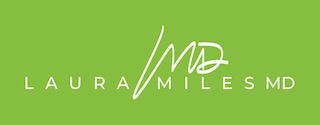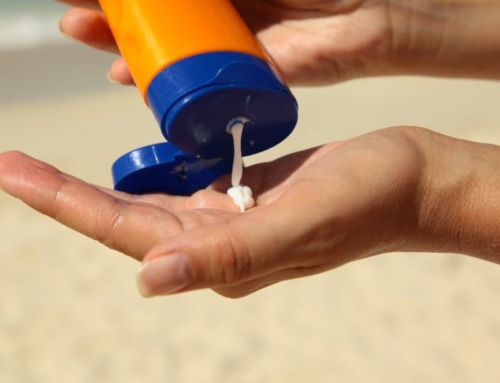Testosterone (T) for a man is so much more than a commercial for ED (erectile dysfunction). While testosterone definitely plays a role in sexual function for me ED can be responsible for many other issues besides ED.
Low T can contribute to
- low mood, even depression
- decreased interest in life
- decreased vitality
- increased body fat
- decreased qualify of sleep or other sleep issues
- erectile dysfunction: decreased hardness, difficulty getting or maintaining an erection
- decreased libido
Studies show nearly 39% of men over the age of 45 have low testosterone below the range of 300. However, most men start feeling symptoms when levels drop below 500 and some even higher than that! It all depends on where your original baseline was. While replacing testosterone in a man can be very good for all of the above symptoms there has been a darker side emerging causing the FDA to put a black box warning for T replacements due to increased risk of heart attack, blood clots and strokes. A well-known cardiovascular surgeon called me several years ago wondering what is going on as he had seen 7 young men in their 30’s that all had blood clots and one even had to have his leg amputated all because of inappropriate use/dosing of testosterone. Just because you are getting testosterone from a physician doesn’t mean they are following you and dosing this correctly!!
The reason testosterone ended up with a black box warning is because of several studies that showed increased risk of heart attack, stroke and blood clots. Several studies looking at cardiovascular risk and testosterone replacement were stopped early in the trial due to an increased association of cardiovascular events especially in men in the highest level groups. Studies can be confusing when looking at testosterone levels and cardiovascular risk. Some demonstrate trends of increasing cardiovascular disease with lower levels of testosterone while others raise an alarm of increasing cardiovascular disease with higher levels. Why the confusing studies? When the studies breakdown the actual levels it appears that men with the lowest AND the highest levels have the highest risk of atherosclerosis (plaque formation). The take home message of these studies is you don’t want too low or too high. You want “just right”!
READ ON to learn how to boost testosterone naturally, ways to replete it with medication and warning signs that you have too much ….
Testosterone is important for so many things….
- Improving blood sugar control
- Improving mood and interest in life
- Decreasing obesity
- Improved libido
- Improving muscle mass
- If very low levels and you replete it can decrease risk of plaque formation (as long as you don’t go too high)
However, when testosterone levels are increased beyond a certain limit, the body starts to produce more red blood cells. The higher the number the thicker your blood is and it just makes sense that this makes you more prone to having blood clots and strokes. It also increases your cholesterol LDL-C and lowers HDL-C which have negative effects and can increase risk of plaque formation. It’s important to understand the common side-effects as well as the potential risks before jumping on the bandwagon of testosterone therapy especially if your numbers are not low so always try to find the underlying cause first.
Finding the underlying cause of low T can be important especially in a younger male when they should not have low levels. I consider the following issues when working with a man with lower levels:
- Sleep apnea – one of the most common causes of low T
- Medications – especially blood pressure medications. Blood pressure and anti-depressants can decrease libido and ability for orgasm as well.
- Excess weight – testosterone gets converted into estrogen
- Sedentary lifestyle – working out boosts testosterone
- High stress – the body lowers the production and binds what you do make with high stress especially continued stress
- Natural aging process
You can try to boost your own production with exercise (specifically strength training), addressing the above issues (especially sleep apnea) and some herbal products. If you have high estradiol then blocking the conversion of your testosterone into estrogen can really help and products like Testralin by Metagenics do just that. Tribulus has been shown to have an affect also. I have found herbal products work best when the testosterone level is not completely bottomed out. If you have addressed all these issues and have low levels with symptoms then explore testosterone replacement. You need to be aware of the potential side-effects and well as the signs and symptoms to be watching for once you are on therapy. There are ways to do this safely and I have given a general outline of how this should be monitored below.
Side Effects: Replacing testosterone even with low doses can cause these common side-effects-
- Infertility (it decreases sperm count)
- Shrinkage of the testicles
- Hair loss
- Acne
- Breast enlargement
Potential risks of taking testosterone include:
- Prostate issues
- Stimulating growth of tumors in prostate (benign and cancerous)
- Stroke
- Cardiovascular disease
- Blood clots
Signs and symptoms of too much testosterone include:
- Increased irritability
- Nipple sensitivity
- Increased hair loss
- Dizziness
- Fatigue
- Increased erectile dysfunction (it might improve at first but the higher the number if it starts declining it is a sign of thicker blood)
- Increased blood pressure
- Headache
- Joint pain
Testosterone Guidelines
How do you replace Testosterone correctly while decreasing the risks?
- Check your levels. On average if you have a level above 600 and feel bad then most likely it is not really a testosterone issue. Be cautious if you do replacement in those cases. Most men do find a benefit if the levels are below 500 and they are having symptoms.
- Monitor your labs within 6 weeks of initiation of testosterone and then every 3-4 months as long as you are on replacement.
Labs I check include: CBC, CMP, estradiol, PSA and total testosterone plus others as needed
Methods of delivery of testosterone include a variety of forms:
- Insurance covered- Need two testosterone levels done prior to 9am that are below the reference range to qualify for coverage on most plans
- Gels – daily use
- Nasal spray -daily use
- Injections – usually once a week or every other week
- Out of pocket options:
- Compounded testosterone creams- daily use
- Injections – weekly or every other week
- Pellets – every 4-6 months
I believe that testosterone can be a safe and an advantageous therapy if monitored correctly. It’s important to point out that the reference range for testosterone is quite large so it is good to aim for an optimal range and that varies per person. The younger the man the higher the optimal range might be. Most men over the age of 50 feel good with ranges between 500-700 although this, too, varies. When the levels are at the very upper end of the reference range or above is when I see the most side-effects.
To your health,
Laura









